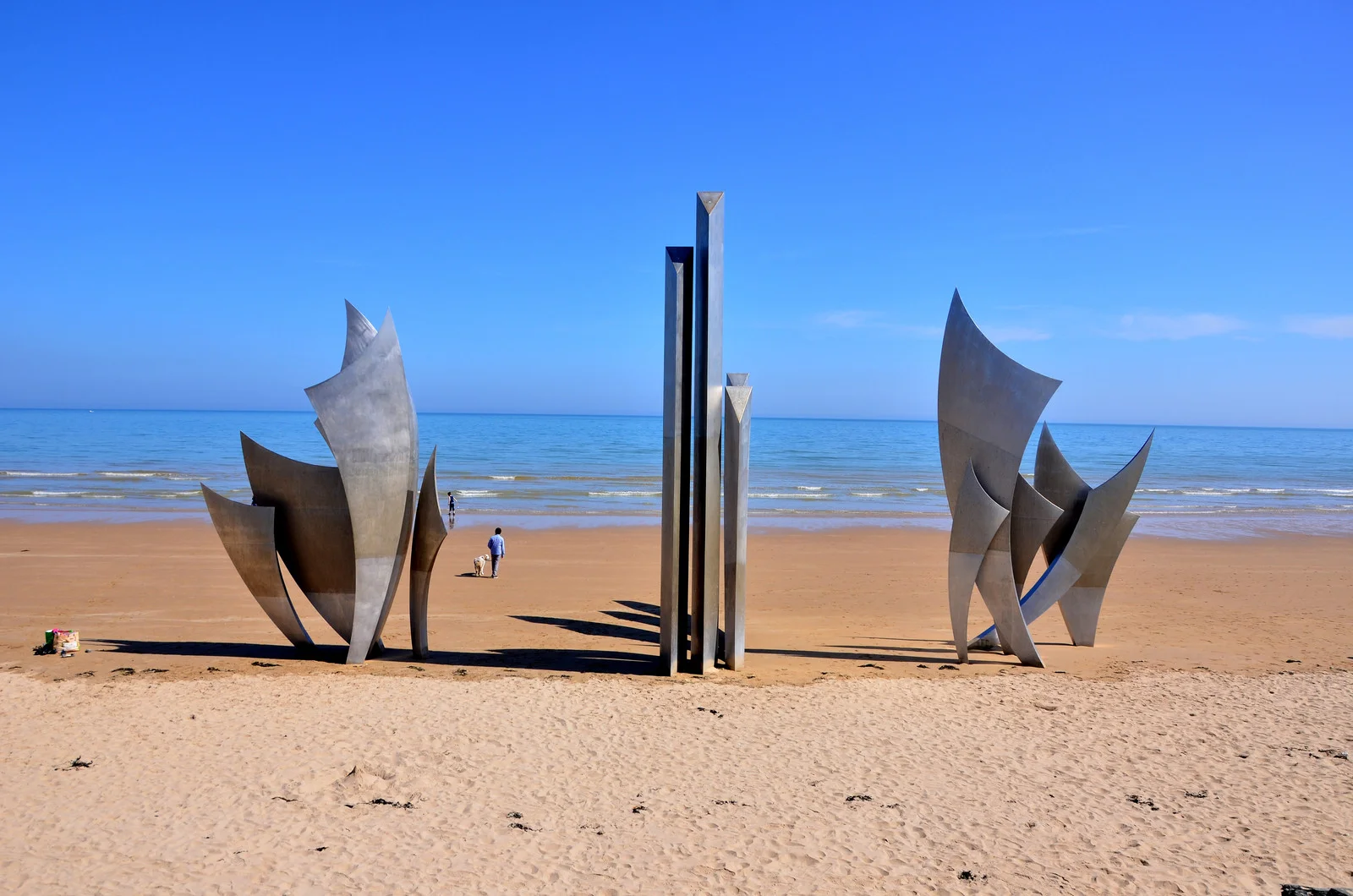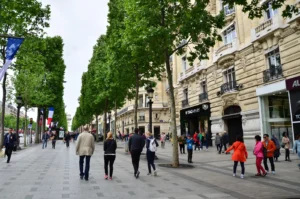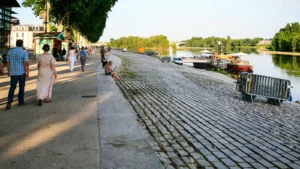France is renowned worldwide for its art, cuisine, and history, but its beaches are equally remarkable. Stretching from the glamorous Côte d’Azur to the rugged Atlantic coast, the French shoreline offers every kind of seaside escape. Whether you’re seeking Riviera luxury, Corsican turquoise waters, or Brittany’s wild charm, you’ll find a setting that feels made for your dream vacation.
The appeal of French beaches lies in their variety. On the Mediterranean, expect sun-soaked bays with private clubs and fine dining. Along the Atlantic, wide sandy stretches welcome surfers and families. Corsica, with its dramatic coves and white sand beaches, feels like a hidden paradise. Even Normandy and Brittany, often overlooked, combine historic sites with raw natural beauty.
This guide explores the top beaches in France, region by region. Each destination highlights what makes it unique, from vibrant boardwalks and chic nightlife to quiet coves accessible only by boat. You’ll also find practical travel tips, seasonal advice, and suggested itineraries to help plan the perfect trip.
Why France Is Perfect for a Beach Vacation
France is a dream destination for beach lovers, as it combines natural beauty, cultural richness, and accessibility within a single country. The coastline stretches over 5,000 kilometers, offering a mix of sandy shores, dramatic cliffs, hidden coves, and glamorous seaside towns. Unlike destinations that cater to a single type of traveler, France offers beaches to suit every taste and vacation style.
Diverse Coastlines
Each region of France’s coastline delivers a different experience:
- Mediterranean (Côte d’Azur & Provence): Renowned for its sunshine, turquoise waters, and chic resorts, it offers glamour, a yachting culture, and lively promenades.
- Corsica: This island paradise is home to some of Europe’s most beautiful beaches, framed by pine forests and mountains.
- Atlantic Coast (Nouvelle-Aquitaine & Loire-Atlantique): Famous for wide sandy beaches, powerful waves, and surf culture. Families also flock here for long stretches of safe coastline.
- Northern France (Brittany & Normandy): Dramatic cliffs, tidal bays, and historic beaches combine natural beauty with cultural depth.
Activities for Every Traveler
France’s beaches aren’t just for sunbathing. You can dive into water sports such as surfing in Biarritz, kite surfing in Camargue, or snorkeling in the Calanques near Marseille. Families enjoy shallow waters in places like La Baule or Corsica’s Rondinara Bay, while adventurers can hike into secluded coves accessible only on foot or by boat.
Accessibility and Amenities
One of France’s strengths is accessibility. The country’s extensive rail and highway networks make it easy to reach beaches from major cities. Coastal towns often offer excellent facilities, including boardwalks, restaurants, beach clubs, and family-friendly amenities. Whether you’re traveling on a budget or seeking five-star luxury, there are accommodations to match.
Best Time to Visit
The French coastline is attractive year-round, but the best months depend on the region:
- Mediterranean: May to September, with hot, sunny weather.
- Atlantic: June to September for pleasant temperatures and surfing conditions.
- Northern France: July and August are the warmest months, although spring and early autumn offer fewer crowds.
In short, France’s beaches stand out due to their variety, cultural significance, and accessibility. You can plan multiple trips to different coasts and experience something entirely new each time.
Côte d’Azur: Glamour and Sunshin
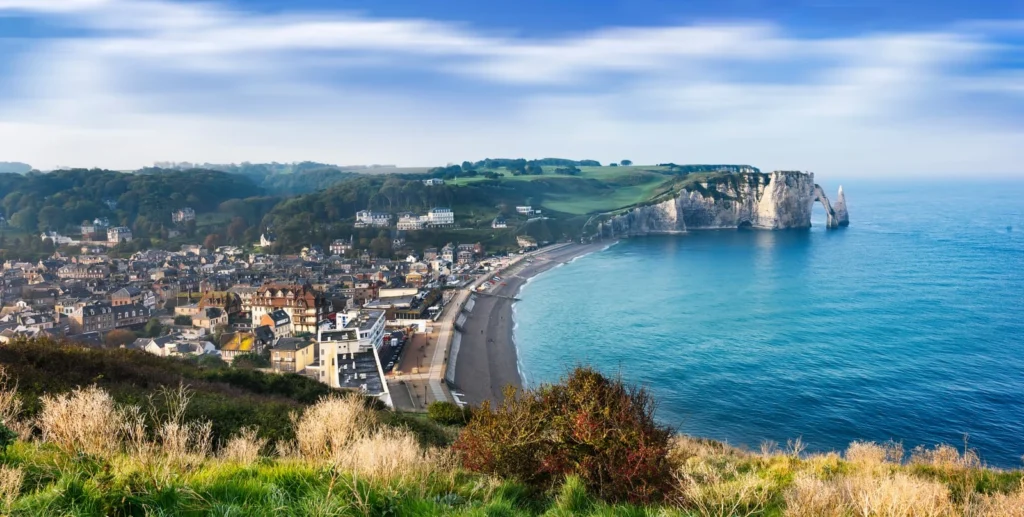
The Côte d’Azur, also called the French Riviera, is the most glamorous stretch of coastline in France. Famous for sun-drenched bays, luxury yachts, and chic seaside towns, it attracts celebrities, artists, and travelers seeking Mediterranean elegance. Beyond its glitz, the Riviera offers natural beauty with turquoise waters, pebbled and sandy beaches, and scenic capes.
1. Promenade des Anglais, Nice
One of the most famous urban beaches in Europe, the Promenade des Anglais stretches along Nice’s city shoreline. Instead of sand, you’ll find smooth pebbles and bright blue waters. The promenade itself is perfect for walking, cycling, or rollerblading, with palm trees and Belle Époque architecture framing the scene.
- Why visit: Combines city life with beach leisure.
- Activities: Swimming, sunbathing, water sports, and people-watching.
- Atmosphere: Lively, cosmopolitan, with beach clubs and public areas.
2. Pampelonne Beach, Saint-Tropez
Pampelonne is synonymous with Riviera glamour. This five-kilometer stretch near Saint-Tropez is lined with exclusive beach clubs like Club 55, where celebrities, royals, and jet-setters gather. Despite its high-profile reputation, Pampelonne also has public sections, making it accessible for all visitors.
- Why visit: World-famous luxury beach with iconic beach clubs.
- Activities: Dining, sailing, and relaxing in stylish cabanas.
- Atmosphere: Chic, energetic, with a blend of sophistication and fun.
3. Paloma Beach, Saint-Jean-Cap-Ferrat
Nestled on the exclusive peninsula of Cap-Ferrat, Paloma Beach is a quieter alternative to Nice and Saint-Tropez. Surrounded by pine trees and limestone cliffs, it boasts crystal-clear waters that are ideal for snorkeling and swimming. The views stretch across the Mediterranean toward Monaco, making it one of the most picturesque spots on the Riviera.
- Why visit: Enjoy the scenic beauty and a calmer vibe.
- Activities: Snorkeling, kayaking, and family outings.
- Atmosphere: Relaxed, elegant, and less crowded than major hotspots.
Why the Riviera Stands Out
The Côte d’Azur offers more than beaches—it’s a cultural hub. Many Riviera towns host film festivals, jazz concerts, and art exhibitions. Combine seaside relaxation with exploring hilltop villages, luxury shopping, and Provençal cuisine for the ultimate Mediterranean experience.
Provence & Var: Secluded Mediterranean Escapes
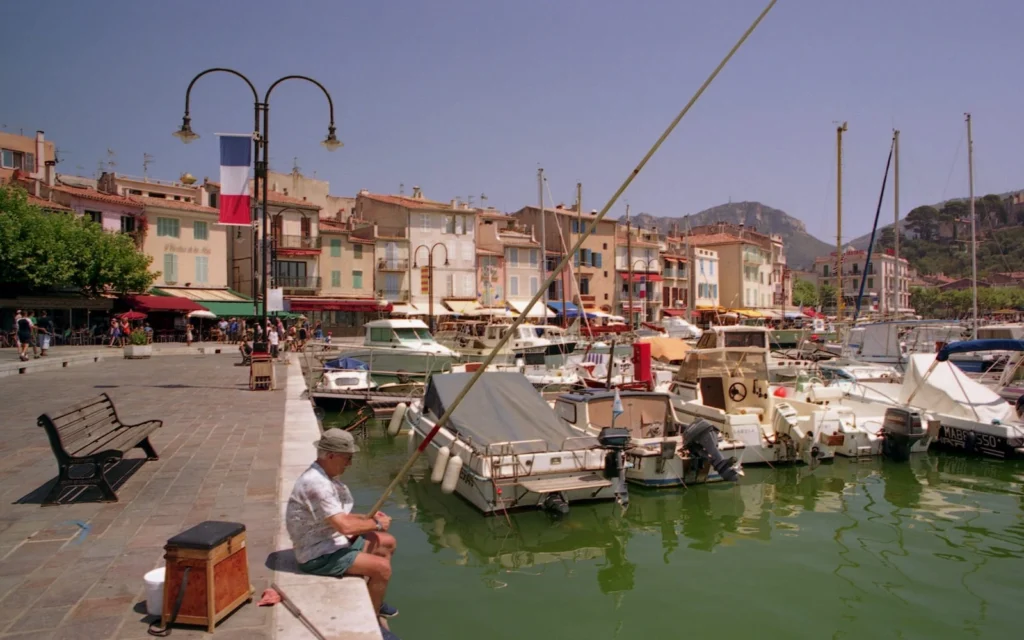
While the Côte d’Azur shines with glamour, Provence and Var reveal a more natural and adventurous side of the Mediterranean. Here, you’ll find wide dune beaches, dramatic limestone coves, and stretches perfect for wind sports. It’s an area that balances rustic charm with hidden beauty, drawing travelers who want peace away from the Riviera’s bustle.
4. Plage de l’Espiguette, Camargue
Located near Montpellier in the Camargue region, Plage de l’Espiguette is one of France’s wildest beaches. Its golden sands stretch endlessly, bordered by shifting dunes and marshes. The area is part of a protected natural park, so don’t expect resorts or clubs—just pure coastal wilderness.
- Why visit: Remote, untamed, and perfect for nature lovers.
- Activities: Kite surfing, horseback riding on the dunes, birdwatching in nearby wetlands.
- Atmosphere: Wild, spacious, and uncrowded.
5. Calanques National Park (Cassis & Marseille)
The Calanques are narrow inlets carved into limestone cliffs, filled with turquoise water. Accessible by boat, kayak, or hiking trails, the Calanques near Cassis and Marseille rank among the most dramatic coastal landscapes in France. Popular spots include Calanque d’En-Vau and Calanque de Port-Miou.
- Why visit: Breathtaking views and crystal-clear waters.
- Activities: Hiking, kayaking, swimming, and cliff diving.
- Atmosphere: Adventurous, scenic, and unforgettable.
6. Plage de l’Almanarre, Hyères
On the Giens Peninsula near Hyères, Plage de l’Almanarre stretches for nearly five kilometers. It’s a haven for windsurfers thanks to steady breezes and shallow waters. Families love its accessibility, while photographers enjoy the unique setting of salt flats on one side and the sea on the other.
- Why visit: Perfect mix of sports and relaxation.
- Activities: Windsurfing, paddleboarding, and family picnics.
- Atmosphere: Sporty yet family-friendly.
Why Provence & Var Are Special
These beaches capture the wild Mediterranean spirit. They’re less commercial than the Riviera yet just as striking. You can spend a morning hiking through pine forests into a Calanque, then relax with Provençal wine at a local seaside village. This balance of rugged adventure and rustic charm makes Provence & Var a coastal treasure.
Corsica: Island Paradise
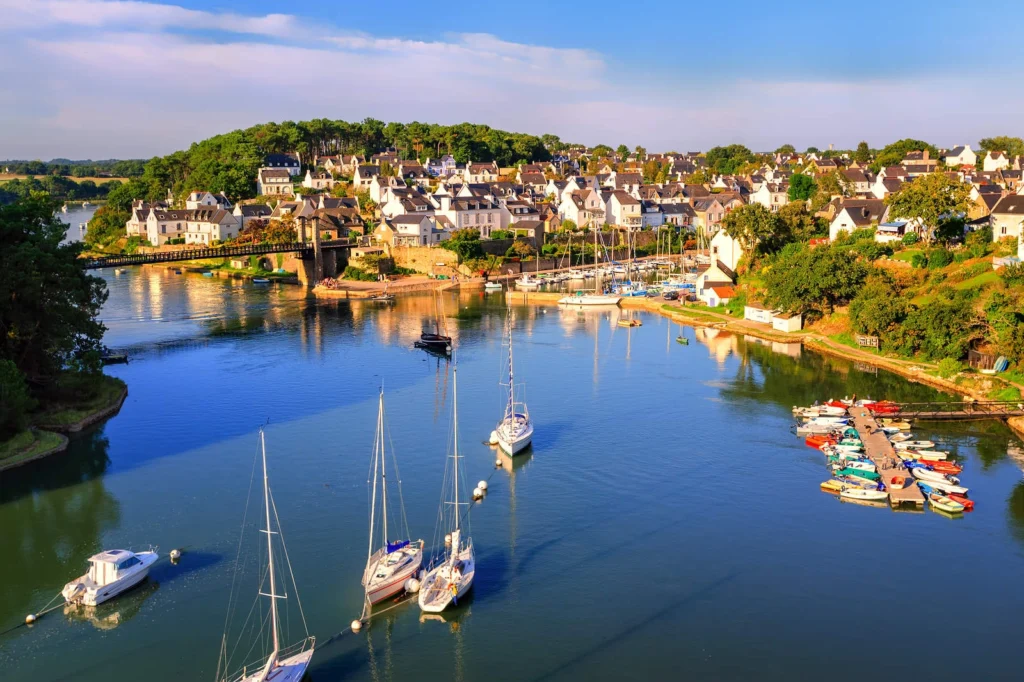
Corsica is often called the “Isle of Beauty,” and its beaches prove why. With a mix of Italian and French influences, the island offers turquoise bays, soft white sands, and rugged mountain backdrops. Unlike the crowded Riviera, Corsica’s beaches feel more secluded and pristine, making it an ideal destination for travelers seeking natural beauty and tranquility.
7. Palombaggia Beach
Palombaggia, near Porto-Vecchio, is Corsica’s most famous beach. Its powdery white sand, crystal-clear waters, and backdrop of pine trees make it look like a tropical escape. The shallow entry makes it perfect for families, while restaurants and bars along the shore add comfort without spoiling the scenery.
- Why visit: Iconic Corsican beach with postcard-perfect views.
- Activities: Swimming, paddleboarding, beachfront dining.
- Atmosphere: Relaxed, elegant, suitable for all ages.
8. Rondinara Beach
Shaped like a crescent moon, Rondinara is a sheltered bay with calm, shallow waters. Its unique geography makes it ideal for children and those seeking peaceful swims. The surrounding headlands protect the beach from winds, creating some of the calmest waters on the island.
- Why visit: Safe swimming spot with striking natural beauty.
- Activities: Kayaking, snorkeling, and family outings.
- Atmosphere: Tranquil, safe, and unspoiled.
9. Saleccia Beach
Saleccia is one of Corsica’s most remote beaches. Hidden behind desert scrubland and only accessible by boat, 4×4, or hiking, it rewards the effort with untouched white sand and impossibly clear waters. With no development in sight, it’s as wild and pristine as the Mediterranean gets.
- Why visit: Remote and unspoiled, perfect for adventurers.
- Activities: Swimming, picnicking, boat excursions.
- Atmosphere: Secluded, pristine, and natural.
Why Corsica Stands Out
Corsica’s beaches combine natural drama with Mediterranean warmth. Unlike the Riviera, they’re not overdeveloped. You can go from a mountain hike to a hidden bay within an hour. For travelers seeking a perfect blend of adventure and relaxation, Corsica offers a perfect balance of wilderness and serenity.
Atlantic Coast: Surf, Family Fun, and Long Sands
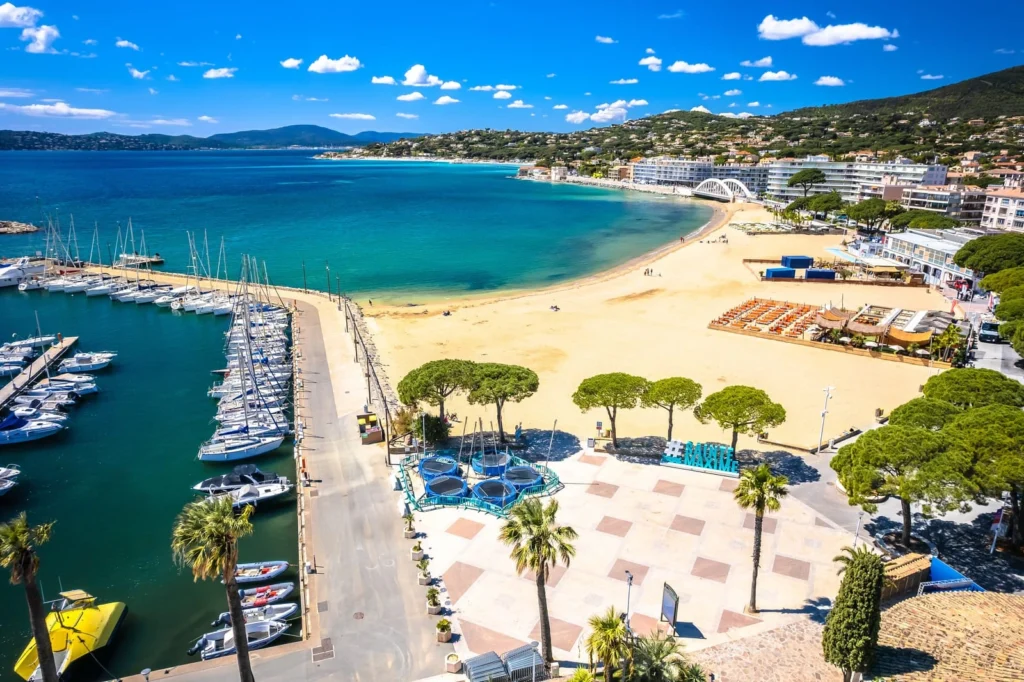
The Atlantic coast of France offers an entirely different vibe from the Mediterranean. Instead of narrow coves and polished beach clubs, you’ll find sweeping sandy beaches, rolling waves, pine forests, and seaside towns with a laid-back atmosphere. This stretch is ideal for surfers, families, and anyone who prefers wide-open spaces over Riviera glamour.
10. Grande Plage, Biarritz
Biarritz is the surf capital of France, and Grande Plage is its centerpiece. Once a royal resort town, it has transformed into a stylish blend of surf culture and seaside elegance. The beach is lively, lined with cafés, surf schools, and a casino, making it perfect for both beginners and experienced surfers.
- Why visit: Iconic beach with surf-meets-elegance charm.
- Activities: Surfing, swimming, seaside dining.
- Atmosphere: Energetic, fashionable, and cosmopolitan.
11. Côte des Basques, Biarritz
Just south of Grande Plage, Côte des Basques is more rugged, backed by cliffs and known as the birthplace of surfing in France. It’s less crowded than Grande Plage and ideal for longboarders. At low tide, the beach expands dramatically, perfect for walks and family outings.
- Why visit: Legendary surf spot with dramatic scenery.
- Activities: Surfing, beach walks, photography.
- Atmosphere: Sporty, relaxed, and local.
12. Dune du Pilat & Banc d’Arguin, Arcachon
The Dune du Pilat is Europe’s tallest sand dune, standing over 100 meters high. Climbing it offers panoramic views of the Atlantic, the pine forests of Landes, and the Banc d’Arguin sandbank below. The surrounding beaches are vast and wild, excellent for both exploration and relaxation.
- Why visit: Unique natural wonder with breathtaking views.
- Activities: Hiking dunes, paragliding, exploring sandbanks.
- Atmosphere: Adventurous, awe-inspiring, and natural.
13. La Baule, Loire-Atlantique
La Baule boasts a nine-kilometer stretch of golden sand, one of the longest in Europe. It’s popular with families thanks to calm waters, playgrounds, and safe swimming zones. Luxury hotels and seafood restaurants line the promenade, offering comfort and style alongside the beach experience.
- Why visit: Family-friendly luxury in a vast sandy setting.
- Activities: Swimming, sailing, and family activities.
- Atmosphere: Relaxed, elegant, and welcoming.
Why the Atlantic Coast Shines
The Atlantic coast offers space, surf, and simplicity. It’s where you trade high-end clubs for surfboards, and secluded coves for expansive horizons. Families love its child-friendly beaches, while surfers flock here for some of Europe’s best waves. For travelers seeking both energy and openness, this coast is unbeatable.
Brittany & Normandy: Rugged Beauty and History
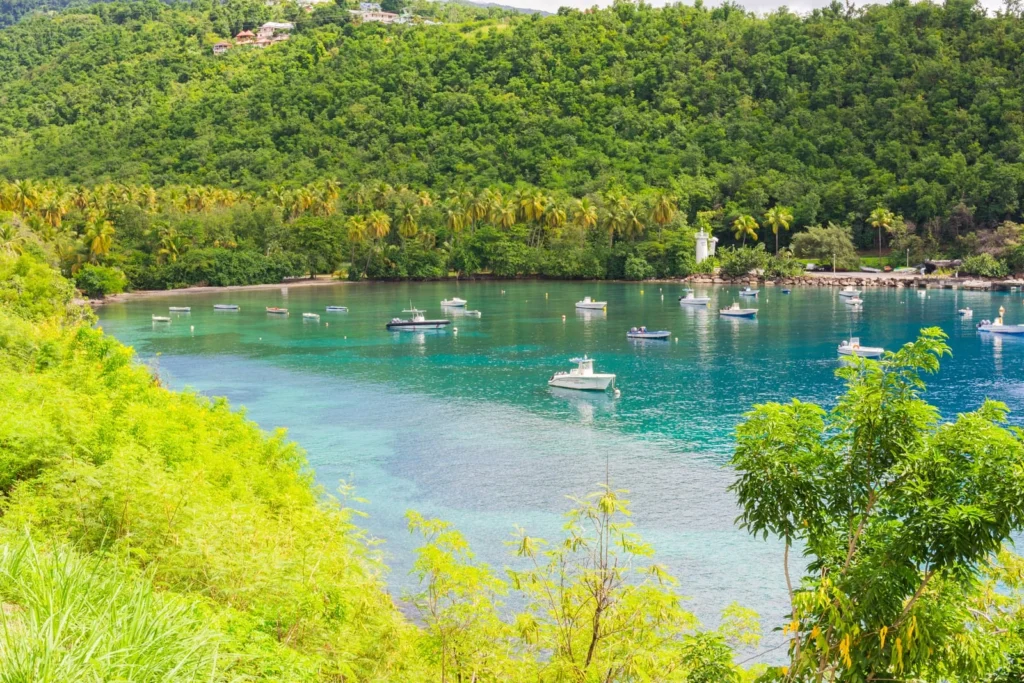
Northern France may not have the Riviera’s sunshine, but its coastline is breathtaking in a different way. Brittany and Normandy combine dramatic cliffs, tidal bays, historic landmarks, and charming seaside towns. These regions are less about glamour and more about authenticity, where wild nature and cultural depth make every beach visit unforgettable.
14. Plage de l’Écluse, Dinard (Brittany)
Dinard, once a favorite of British aristocrats, is famous for its Belle Époque villas and relaxed seaside charm. Plage de l’Écluse is the town’s main beach, offering golden sands and calm waters. The elegant boardwalk is lined with cafés, while tidal pools make it a favorite for families.
- Why visit: Belle Époque charm with family-friendly facilities.
- Activities: Swimming, beach games, exploring nearby villas.
- Atmosphere: Classic, refined, and relaxed.
15. Plage de l’Île Vierge, Crozon Peninsula (Brittany)
This hidden gem on the Crozon Peninsula is consistently ranked among France’s most beautiful beaches. Accessible only by foot or boat, it rewards the effort with turquoise waters, white pebbles, and cliffs covered in pine trees. It feels untouched, offering a sense of solitude.
- Why visit: Remote and breathtakingly scenic.
- Activities: Swimming, kayaking, coastal hikes.
- Atmosphere: Secluded, wild, and pristine.
16. Omaha Beach, Normandy
Omaha Beach is more than a seaside destination—it’s a place of remembrance. As one of the D-Day landing sites of World War II, it combines natural beauty with historical weight. The wide sands and gentle waves make it a serene beach, but its monuments and cemeteries remind visitors of its rich history and significance.
- Why visit: Historic site with cultural importance.
- Activities: reflection, walking, and visiting memorials.
- Atmosphere: Quiet, solemn, yet beautiful.
Why Brittany & Normandy Stand Out
These northern coasts offer a different kind of beach experience. Instead of luxury clubs, you get tidal wonders, hidden coves, and beaches steeped in history. Brittany rewards hikers and explorers, while Normandy invites reflection. For travelers who value culture, authenticity, and rugged scenery, these regions are unmissable.
Activities and Experiences on French Beaches
French beaches offer far more than a place to sunbathe. They combine adventure, culture, and gastronomy, making a trip to the coast as enriching as it is relaxing.
Water Sports and Adventure
The Atlantic coast is the heart of surfing in France. Biarritz and Hossegor attract global competitions, while beginners can take lessons at local surf schools. In Provence, steady winds at Plage de l’Almanarre and Plage de l’Espiguette make them hotspots for windsurfing and kite surfing. If you prefer calmer waters, Corsica’s bays and the Calanques near Marseille are perfect for snorkeling, diving, or kayaking through hidden coves.
Beach Clubs and Public Access
Along the Côte d’Azur, private beach clubs line the shore with sun loungers, cabanas, and waiters serving chilled drinks. They suit travelers looking for comfort and exclusivity. Public beaches remain equally appealing, filled with families, students, and backpackers. They showcase the everyday energy of French seaside life and often cost nothing beyond a towel and sunscreen.
Coastal Cuisine
Food is an integral part of the beach experience. Dining varies widely depending on the region: Riviera cafés serve Provençal dishes accompanied by rosé, while the Atlantic coast is renowned for its oysters, mussels, and seafood platters. In Corsica, meals often feature chestnut bread, island cheeses, and local charcuterie, all enjoyed with stunning sea views. A beachfront meal becomes a highlight of the trip.
Festivals and Events
Summer brings a calendar of lively celebrations. Nice Carnival fills the promenade with parades each February, while the Cannes Film Festival in May blends cinema with seaside glamour. Many towns also honor the Fête de la Mer, where boat parades and seafood feasts celebrate maritime heritage.
Key highlights for travelers:
- Surf culture thrives in Biarritz and Hossegor.
- The Calanques and Corsica are best for snorkeling and kayaking.
- Private clubs dominate the Riviera; public access is more common elsewhere.
- Oysters in Brittany and rosé in Provence are must-try flavors for the seaside.
- Major festivals like Nice Carnival and Fête de la Mer add cultural flair to beach trips.
Why These Experiences Matter
What makes French beaches special is their mix of leisure and culture. A single day might include swimming, tasting oysters fresh from the shore, and watching a festival parade—all set against world-class scenery.
Practical Tips for Your Beach Trip
Planning a beach vacation in France is easier when you’re familiar with the local rhythms, travel logistics, and small details that make a big difference. The country’s long coastline spans different climates and cultures, so preparation ensures a smoother and more enjoyable experience.
Best Time to Visit
France’s beaches are seasonal, and the best months depend on the region. The Riviera is warmest from May to September, with July and August bringing large crowds. The Atlantic coast experiences pleasant temperatures from June to September, making it an ideal destination for surfing and family vacations. In Brittany and Normandy, July and August are the warmest months, but spring and early autumn offer quieter atmospheres.
Getting There and Around
France’s efficient rail system connects major cities with coastal hubs. From Paris, you can reach Nice, Marseille, Biarritz, or La Rochelle by high-speed train in just a few hours. Ferries link the mainland with Corsica, while car rentals are the best option for exploring secluded beaches, especially in Provence and Brittany.
Quick travel pointers:
- TGV trains connect Paris to Nice in under 6 hours.
- Ferries to Corsica depart from Marseille, Toulon, and Nice.
- Car rentals are recommended for the Calanques, Brittany coves, and remote Corsican beaches.
Family vs. Luxury Travel
France accommodates every travel style. Families often prefer the Atlantic coast and Brittany, where beaches are wide, shallow, and equipped with playgrounds. Luxury seekers head to Saint-Tropez or Cannes, where beach clubs and five-star hotels dominate. Corsica strikes a balance, offering safe bays alongside upscale resorts.
Packing Essentials
Conditions vary between pebbly Riviera shores, sandy Atlantic stretches, and remote Corsican coves. A few smart items will make the trip more comfortable:
- Water shoes for pebble beaches in Nice and Cap-Ferrat.
- Lightweight hiking shoes for visiting the Calanques or Corsican coves.
- Reef-safe sunscreen, as many beaches are part of protected marine parks.
- A light jacket for cooler evenings along the Atlantic and northern coasts.
Why Planning Matters
French beaches are diverse, and being prepared allows you to fully enjoy them. Knowing when to go, how to get there, and what to bring transforms a good trip into a great one.
Château de Lasfonds: Where the French Coastline Meets Quiet Grandeur

Beyond the Riviera’s light and the Atlantic’s surf lies another side of France—one defined by stillness, craftsmanship, and enduring beauty. The Château de Lasfonds, situated on the border of the Dordogne and Charente, embodies this balance. Built in the 19th century and restored with architectural precision, the château rises over 6.5 hectares of parkland and forest, its Neo-Gothic towers reflecting an age of artistry rather than excess.
Inside, preserved stonework, stained glass, and vaulted halls meet contemporary comfort. The restoration respects history while embracing modern living—sustainable heating, refined interiors, and reimagined outbuildings that now host guests and events.
Its location offers perspective: vineyards, medieval villages, and the routes to Bordeaux and the Atlantic lie within reach, yet the estate itself feels suspended in calm. Travelers who end their coastal journeys here discover not an escape but a conclusion—where the energy of France’s beaches meets the grace of its countryside.
Explore Château de Lasfonds and book your stay to experience the quiet grandeur that completes a true French journey.
FAQs: Planning the Perfect French Beach Vacation
Beyond the Riviera and Biarritz, beaches like Plage de Donnant in Belle-Île-en-Mer, Plage du Sillon in Saint-Malo, and Les Grenettes on Île de Ré offer quieter, equally stunning experiences. These spots attract locals more than tourists, offering clean waters, charming seaside villages, and relaxed atmospheres that are free from the crowds of famous resort towns.
Many coastal areas now follow strict Blue Flag certification standards for environmental quality. Look for beaches like Palombaggia in Corsica or Les Huttes on Île d’Oléron. France also promotes eco-tourism zones where electric shuttles, dune protection, and plastic bans preserve the natural ecosystem while ensuring traveler comfort.
Absolutely. France’s coastline is rich with cultural layers—Roman ruins near Arles, medieval towns like Saint-Malo, and Impressionist art trails along Normandy’s cliffs. You can swim in the morning, then visit museums, châteaux, or vineyards in the afternoon. This mix of leisure and heritage is what makes French beach travel uniquely rewarding.
Corsica and Île de Ré lead the list. Corsica offers tropical-like coves and dramatic mountains, while Île de Ré near La Rochelle features cycling paths, whitewashed villages, and golden sands. Île d’Yeu and Porquerolles are smaller gems, ideal for travelers seeking quiet, nature-focused escapes accessible by ferry.
Yes, France is one of Europe’s safest and most welcoming countries for solo beach trips. Cities like Nice, Biarritz, and La Rochelle offer social hostels, seaside cafés, and active traveler communities. Coastal trains and buses make it easy to explore independently, while locals are accustomed to welcoming international visitors year-round.
For the clearest waters, head south. The Calanques near Cassis, Corsica’s bays like Rondinara, and the secluded coves around Antibes all offer turquoise visibility. Even on the Atlantic, Arcachon Bay and Île de Ré maintain excellent water quality thanks to strong conservation standards and oceanic currents.
Yes. The Atlantic and Brittany coasts have several regulated beachfront campsites, such as those near Mimizan, Quiberon, and Saint-Briac-sur-Mer. These sites often provide direct beach access, on-site bakeries, and cycle routes. Wild camping isn’t permitted directly on beaches, but many eco-campsites are just minutes from the shore.
A mix of train and car travel works best. France’s TGV lines connect major coastal cities quickly, while renting a car allows flexibility for smaller coves and scenic drives. For example, you could take the train from Paris to Marseille, rent a car to explore Provence, then fly or ferry to Corsica.
France has made major progress in accessibility. Many beaches, like Nice’s Carras Beach or La Baule, provide “Handiplage” certification—featuring ramps, amphibious chairs, and accessible restrooms. Even smaller towns are adding facilities to ensure inclusive travel experiences along the country’s coastlines.
Beach attire is casual but tasteful. Swimsuits are standard, and topless sunbathing is accepted on most beaches, though not mandatory. Always bring a cover-up when entering cafés or restaurants. Public nudity is restricted to designated naturist beaches such as Cap d’Agde or Euronat near Bordeaux.
Costs vary by region. The Riviera and Corsica lean luxury, with higher accommodation rates and dining prices. The Atlantic coast, Brittany, and the Occitanie region are more affordable, especially in shoulder months like May or September. France’s rail network and regional guesthouses also make budget travel easy without compromising comfort.
Some are pet-friendly, particularly in Brittany and the Atlantic regions. However, many Mediterranean beaches restrict dogs during high season. Look for signs marked “Chiens autorisés” or check local tourism sites. Off-season travel often allows dogs on most beaches, making autumn a perfect time for pet owners.
Always swim in designated zones marked by blue flags and lifeguard posts. The Atlantic’s surf can create strong currents, so beginners should stay near monitored areas. Check local color-coded flags for water conditions, and avoid rocky Calanques during high winds. France’s beach safety standards are among Europe’s strictest.
May, early June, and late September offer pleasant weather and fewer crowds. These shoulder seasons provide warm seas, open hotels, and easier restaurant bookings. It’s also the best time for photographers and food lovers, as markets and vineyards reach peak variety without the summer rush.
Stay in smaller seaside towns instead of major resorts. Morning markets in Saint-Jean-de-Luz, oyster farms in Arcachon, and fishing ports in Cassis reveal the coast’s true rhythm. Renting a bicycle or joining a village festival often leads to more authentic encounters than sticking to hotel areas.
